All students should graduate from high school ready for college, careers, and citizenship.

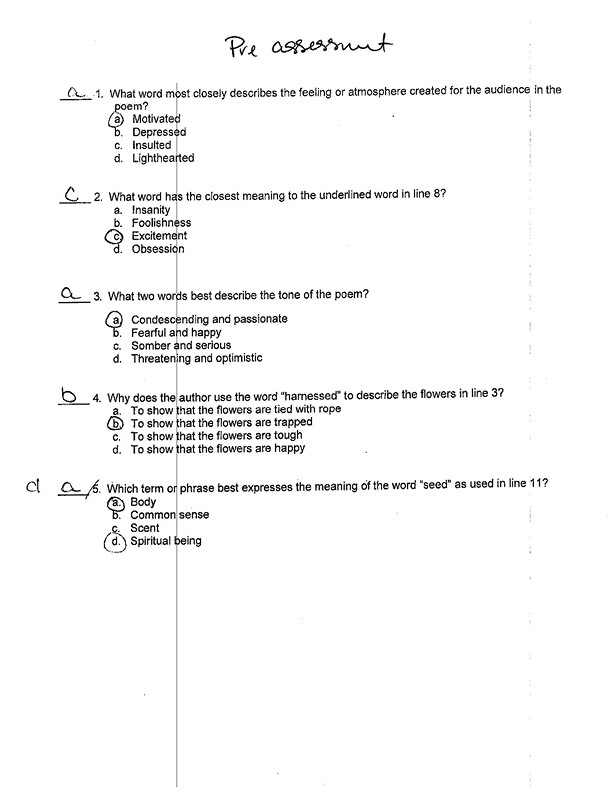
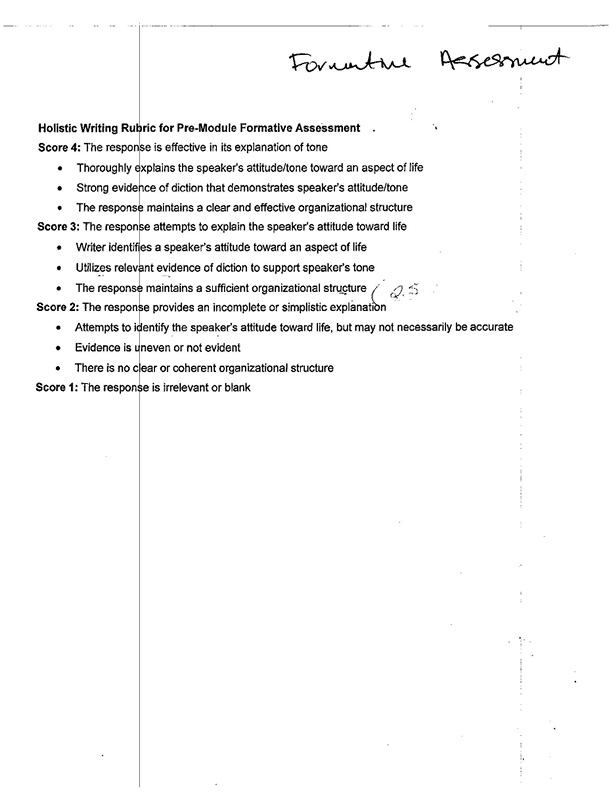
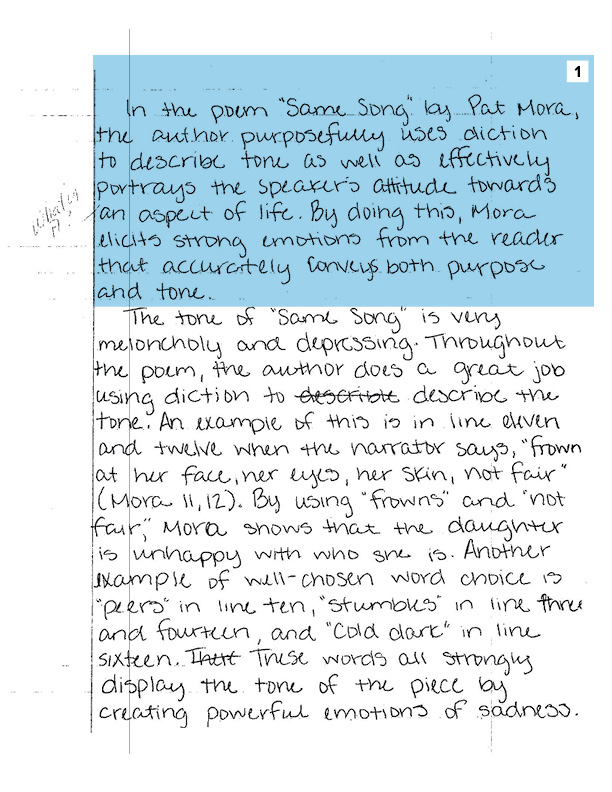
1. CCSS Alignment
The student demonstrates proficiency in how words are used connotatively to portray tone. The student is able to select specific evidence of diction to demonstrate this understanding. However, the student needs to identify the speaker’s attitude toward life.
Standard referenced:
RL.9–10.4: Determine the meaning of words and phrases as they are used in the text, including figurative and connotative meanings; analyze the cumulative impact of specific word choices on meaning and tone (e.g., how the language evokes a sense of time and place; how it sets a formal or informal tone).
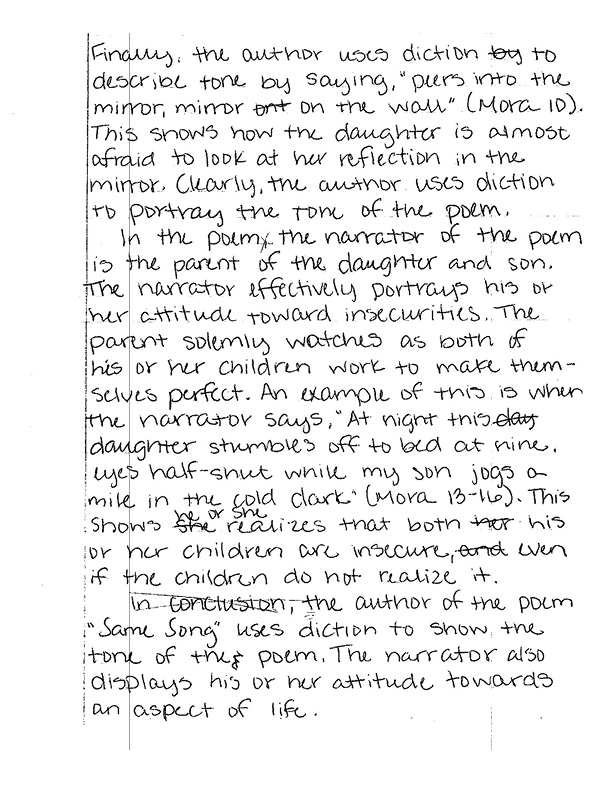
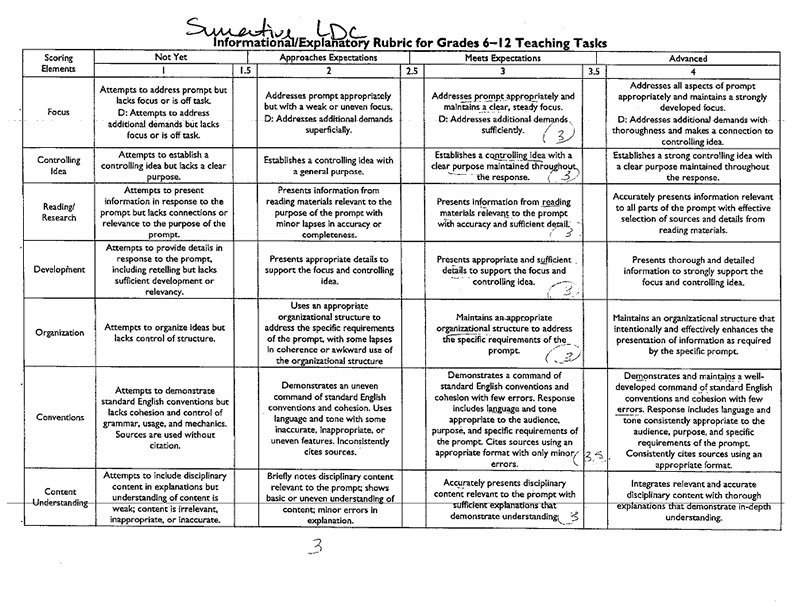
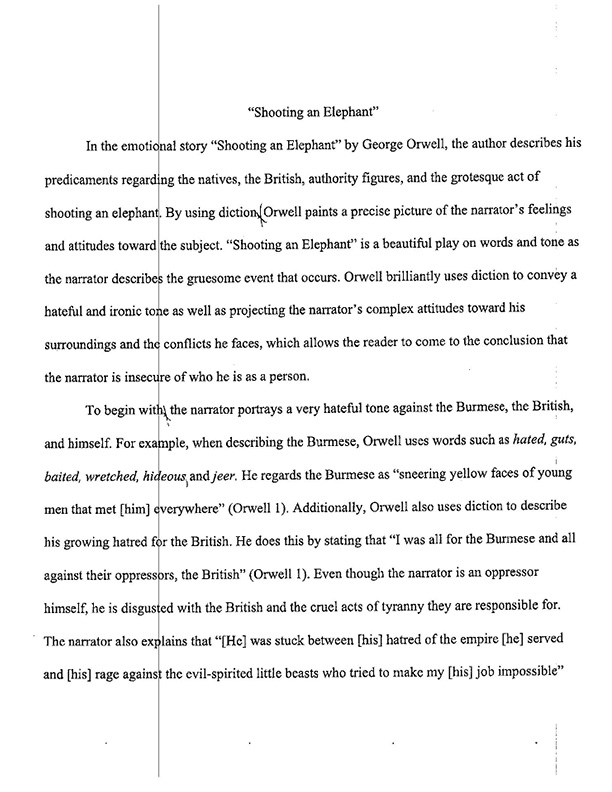
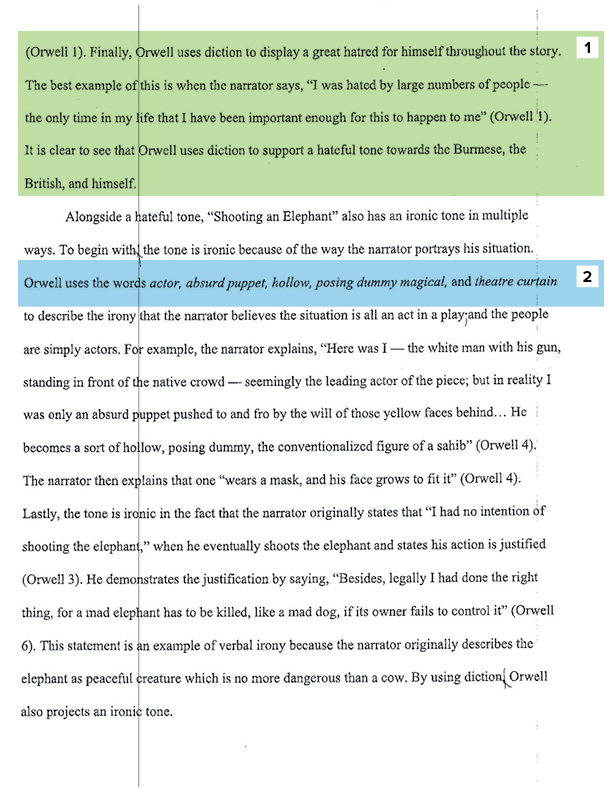
1. Understanding
By citing specific diction that conveys the narrator’s attitude, the student clearly recognizes the negative emotions that Orwell feels toward both the British and the Burmese, as well as the confliction created within himself. However, selecting the word “hateful” to describe these emotions might be a stretch and is not justified by the student’s evidence/commentary.
2. CCSS Alignment
The student makes the explicit connection between the author’s diction and the narrator’s tone. Many of the words provided as evidence by the student have figurative implications in understanding the situation (i.e. “actor,” “puppet,” “theater,” etc.).
Standard Referenced:
RL.9–10.4: Determine the meaning of words and phrases as they are used in the text, including figurative and connotative meanings; analyze the cumulative impact of specific word choices on meaning and tone (e.g., how the language evokes a sense of time and place; how it sets a formal or informal tone).
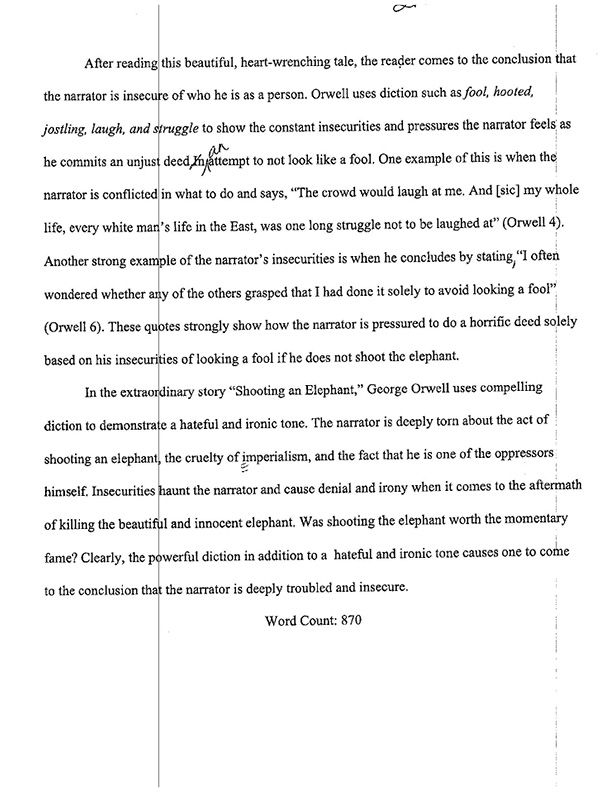
Support Materials
(Entire page)
From the “Reading and Research” section of the rubric, it is clear that the student reaches a level 3: “Presents information from reading materials relevant to the prompt with accuracy and sufficient detail.” Extended commentary on why the quotations prove the point would take this to a Level 4.
